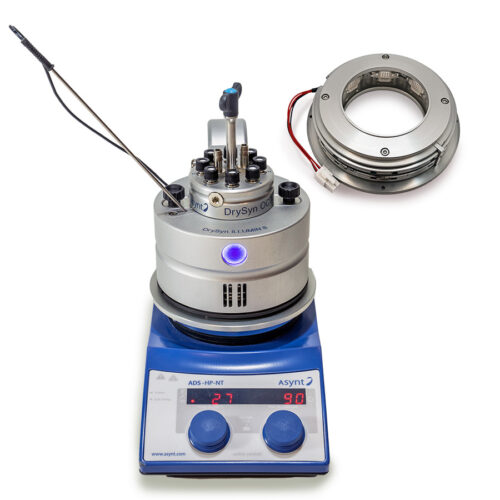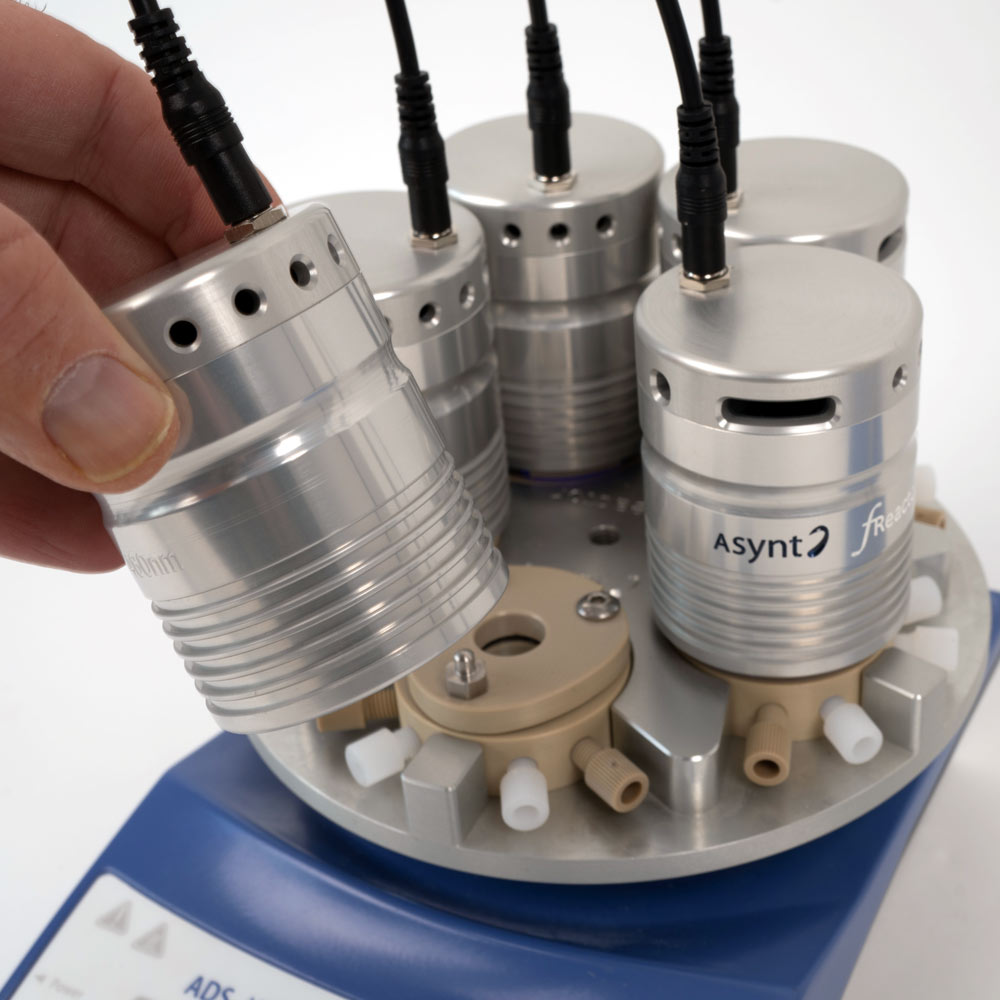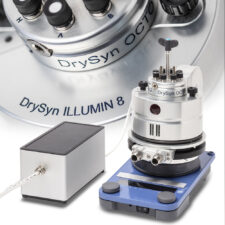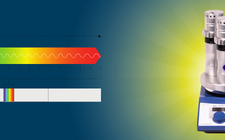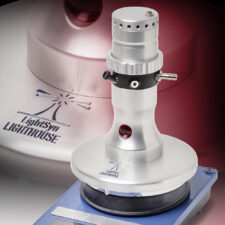Photocatalysis is one of the fastest growing areas in organic synthesis, leading to an expansive range of available tools and methods being developed in recent years. So, what exactly is it, and what are the applications of photocatalysis in the lab?
In simple terms, photocatalysis is the use of light (usually at UV or visible wavelengths) to accelerate a reaction. There are numerous possible light sources that can be used for this process; mercury vapour lamps with intense UV for example, but Asynt products use high powered LEDs as they provide the opportunity of isolating a narrow bandwidth and operative very efficiently.
Originally photoredox was only run using ultraviolet light but, in 2008, a team lead by David MacMillan of Princeton University developed a method for using visible light concurrently (but independently) with researchers Tehshik Yoon and Corey Stephenson. This discovery opening many new avenues of chemistry to explore.
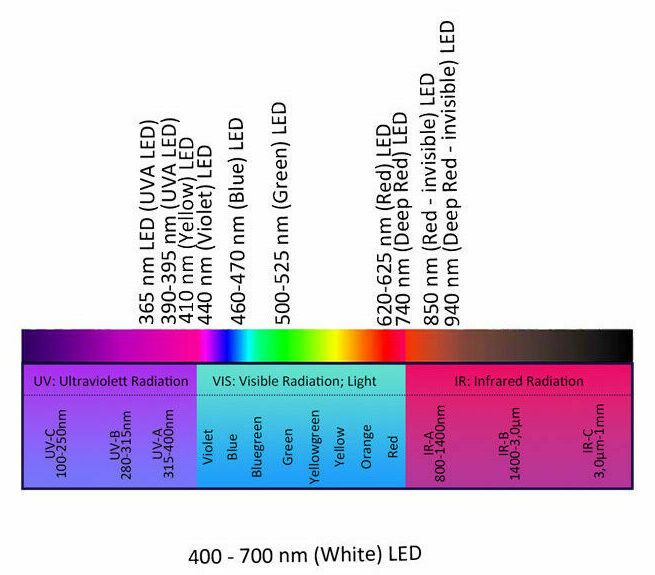 This graphic shows a selection of LEDs available from Asynt
This graphic shows a selection of LEDs available from Asynt
Examples of photocatalysis application:
- Photoredox-mediated hydrogen atom transfer (HAT) and nickel catalysis – you can find out more about this process here: Accessing 2-Aryl N-Heterocycles with Photocatalysis
- Environmental remediation – photocatalysis can be uses in processes such as air and water purification by degrading pollutants.
- Organic synthesis – photocatalysis is highly useful for organic synthesis as it can produce energetic reactions under relatively mild conditions saving on energy and consumables
- Hydrocarbon synthesis – photocatalysis has also be utilised in researching the conversion of carbon dioxide into fuel
- Many more besides – these examples are just a small subset of the possible applications of photocatalysis, and with the field rapidly growing it is very likely new techniques will be developed in the near future
How do photocatalytic reactors work?
A critical consideration in a photoreactor’s design is to ensure a high level of photon penetration into the reactants. Three types of reactor design include:
- Light rod reactor:This reactor uses a quartz rod to channel light directly from the LED unit into the reaction (by submerging the end of the rod into the reactants). The internal refection in the quartz has a similar effect to a fibreoptic cable allowing for minimal loss of light before entry into the reaction.
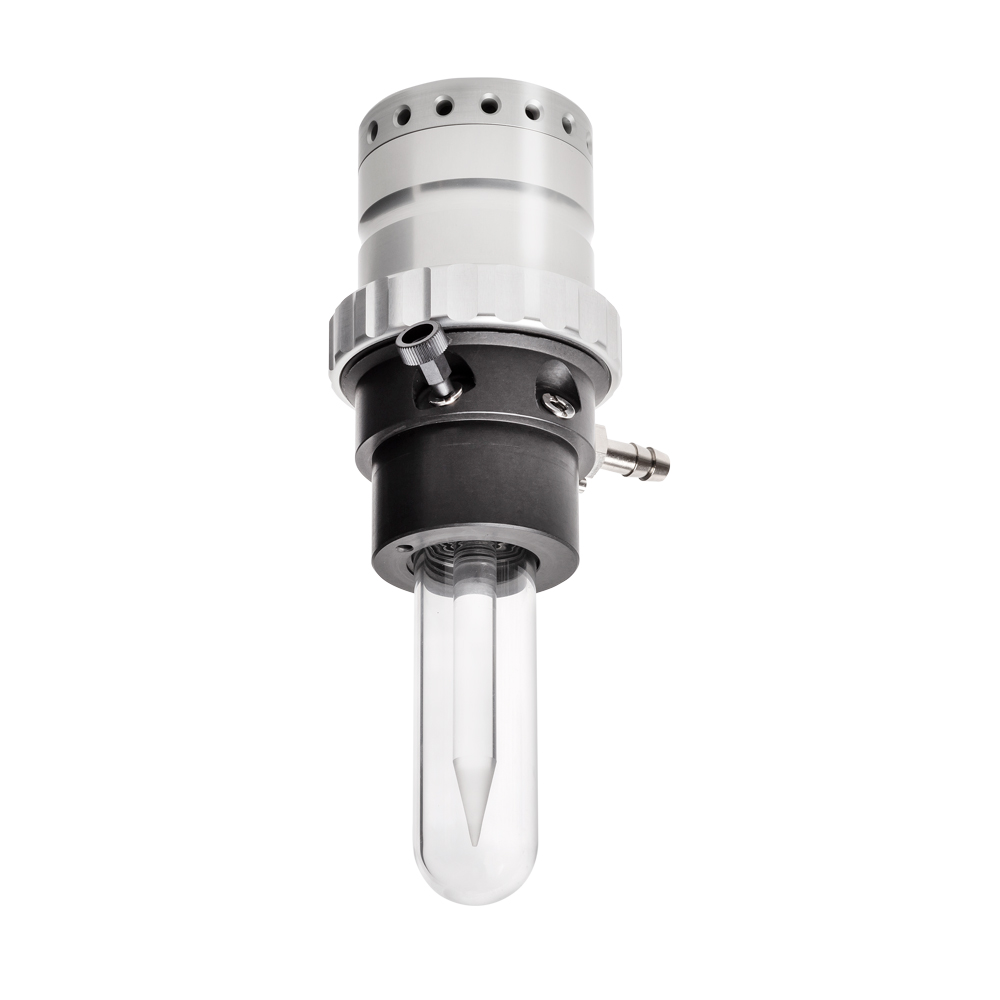 The Lighthouse module showing the quartz light rod inside the 18 mL vial
The Lighthouse module showing the quartz light rod inside the 18 mL vial
- Parallel reactor: Parallel reactors are designed to enable users to run multiple reactions simultaneously. These reactors are suited to high-throughput screening and other processes involving batch chemistry. The smaller individual volumes of each reaction also allow for greater overall photo penetration than if the reaction was performed in a single vessel of equivalent total volume.
Asynt’s Illumin8 is a eight position parallel photoreactor. Here the interchangeable LED module is shown. These modules can be switched out allowing for multiple wavelengths to be run in the same reactor
- Flow / Photoreactor Combination: Here, light is shone into the reactants as they are pumped through a flow chemistry system, catalysing the reaction. In the case of Asynt’s own fReactor with PhotoFlow module, LED units (1-5 of your required wavelength) are fitted above the CSTRs (continuous stirred tank reactors) and shine light into the reaction via a small window. This set up is perfect for anyone looking to start combining photo and flow chemistry.
The fReactor allows for up to five PhotoFlow LED modules to be set up in combination with the CSTRs situated beneath them.
Conclusion:
Photocatalysis has a wide variety of applications, and this is reflected in the extensive range of tools available. It is also a growing field with many exciting developments on the horizon.
If you’d like to know more about the Asynt photochemistry solutions please contact us via [email protected], call us on 01638 781709 or talk with us via the live chat in the bottom right corner of your screen. We look forward to hearing from you!
